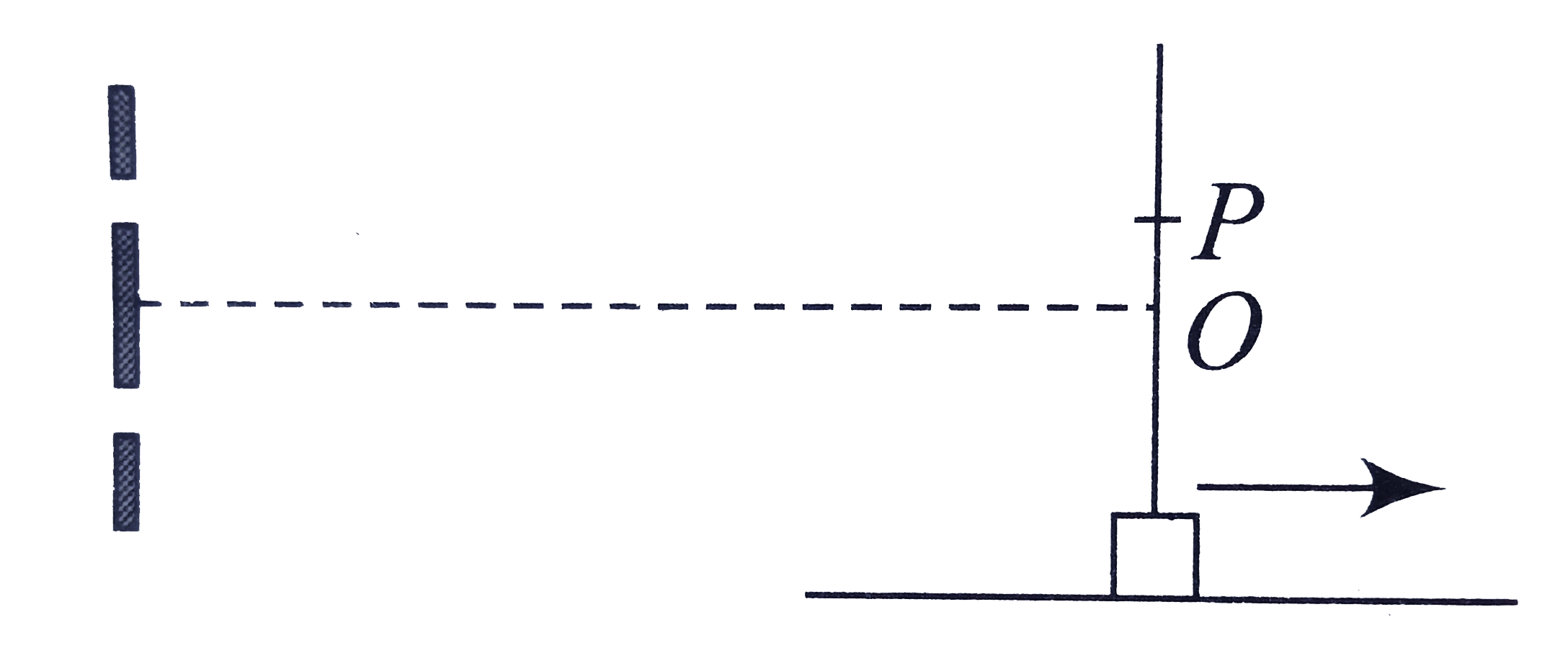As we move away from the edge into the geometrical shadow of a straight edge, the intensity of illumination
decreases
increases
remains same
none of the above
The correct Answer is:A
To solve the question regarding the intensity of illumination as we move away from the edge into the geometrical shadow of a straight edge, we can follow these steps:
Step 1: Understand the Concept of Diffraction
Diffraction is the bending of waves around obstacles and the spreading of waves when they pass through small openings. When light encounters an edge, it does not just stop; it bends around the edge, leading to a pattern of light and dark regions.
Hint: Recall that diffraction occurs when waves encounter an obstacle or aperture, causing them to spread out.
Step 2: Identify the Geometrical Shadow
The geometrical shadow is the area behind the edge where light cannot travel in a straight line. However, due to diffraction, light can still reach this shadowed area, albeit with reduced intensity.
Hint: Consider how light behaves when it encounters an obstacle and how it can still reach areas that are geometrically shadowed.
Step 3: Analyze the Intensity of Illumination
As we move away from the edge into the geometrical shadow, the intensity of illumination is affected by the diffraction pattern created by the edge. The central maximum (brightest part) is closest to the edge, and as we move further away, the intensity decreases.
Hint: Think about how the intensity of light changes in a diffraction pattern, particularly in relation to the central maximum.
Step 4: Conclude on the Intensity Trend
From the understanding of diffraction, we conclude that as we move further away from the edge into the geometrical shadow, the intensity of illumination decreases. This is because the light waves spreading out from the edge become less concentrated as we move away from the source of the diffraction.
Hint: Remember that in diffraction patterns, the intensity typically decreases as you move away from the central bright region.
Final Answer
As we move away from the edge into the geometrical shadow of a straight edge, the intensity of illumination decreases.
Diffraction is the bending of waves around obstacles and the spreading of waves when they pass through small openings. When light encounters an edge, it does not just stop; it bends around the edge, leading to a pattern of light and dark regions.
The geometrical shadow is the area behind the edge where light cannot travel in a straight line. However, due to diffraction, light can still reach this shadowed area, albeit with reduced intensity.
As we move away from the edge into the geometrical shadow, the intensity of illumination is affected by the diffraction pattern created by the edge. The central maximum (brightest part) is closest to the edge, and as we move further away, the intensity decreases.
From the understanding of diffraction, we conclude that as we move further away from the edge into the geometrical shadow, the intensity of illumination decreases. This is because the light waves spreading out from the edge become less concentrated as we move away from the source of the diffraction.
As we move away from the edge into the geometrical shadow of a straight edge, the intensity of illumination decreases.
Topper's Solved these Questions
- WAVES OPTICSBook:AAKASH SERIESChapter:WAVES OPTICSExercise:EXERCISE -IA (POLARASATION)
Explore 29 Videos
- WAVES OPTICSBook:AAKASH SERIESChapter:WAVES OPTICSExercise:EXERCISE -IA (SATEMENT TYPE QUESTIONS)
Explore 12 Videos
- WAVES OPTICSBook:AAKASH SERIESChapter:WAVES OPTICSExercise:EXERCISE -IA
Explore 54 Videos
- WAVESBook:AAKASH SERIESChapter:WAVESExercise:EXERCISE-III (Doppler effect :)
Explore 15 Videos
Similar Questions
A parallel beam of light is incident on a converging lens parallel to its principal axis. As one moves away from the les on the other side on its principal axis, the intensity of light
View SolutionIn Young's double-slit experment, the frist maxima is observed at a fixed point P on the screen. Now, the screen is continously moved away from the plane of slits. The ratio of intensity at point P to the intensity at point O (center of the screen)

View Solution
Knowledge Check
We walked _______ the edge of the desert.
Aas far asBup toCuntilDbyAssertion : If we look clearly at the shadow cast by an opaque object, close to the region of geometrical shadow, alternate dark and bright regions can be seen.
Reason : This happens due to the phenomenon of interference.AIf both assertion and reason are true and reason is the correct explanation of assertion.BIf both assertion and reason are true but reason is not the correct explanation of assertion.CIf assertion is true but reason is false.DIf both assertion and reason are false.
In Young's double-slit experment, the frist maxima is observed at a fixed point P on the screen. Now, the screen is continously moved away from the plane of slits. The ratio of intensity at point P to the intensity at point O (center of the screen)

View SolutionAs we move from the poles of equator, the biological diversity
View SolutionThe diffraction pattern due to a straight edge contains
View SolutionA glass marble projected horizontally from the top of a table falls at a distance x from the edge of the table. If h is the height of the table, then the velocity of projection is
View SolutionA ball rolls off the edge of a horizontal table top 4 m high. If it strikes the floor at a point 5 m horizontally away from the edge of the table, what was its speed at the instant it left the table?
View SolutionA disc of radis R is cut out from a larger disc of radius 2R in such a way that the edge of the hole touches the edge of the disc. Locate the centre of mass of the residual disc.
View Solution

